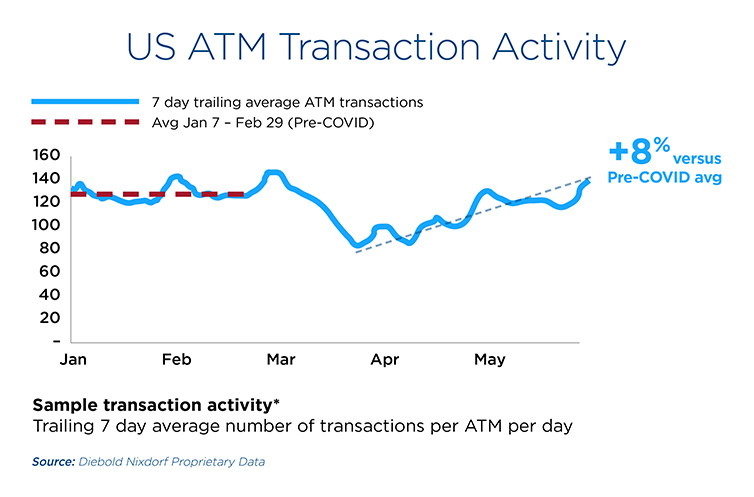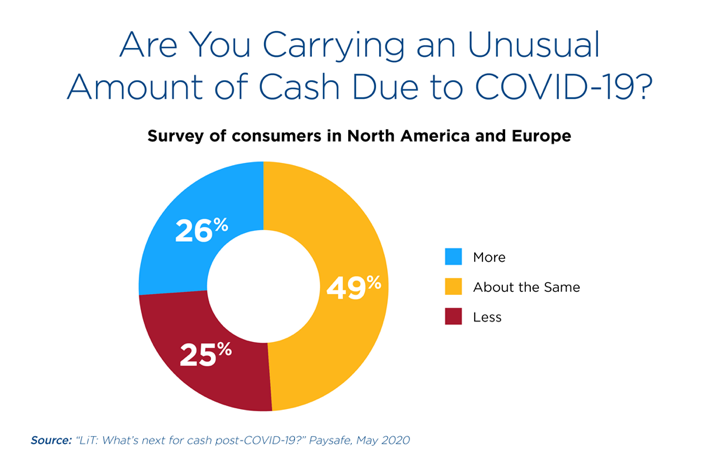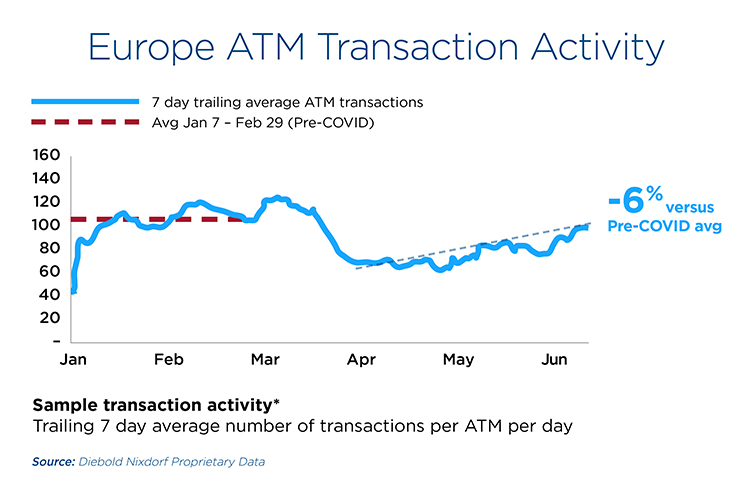
June 26, 2020 | SCOTT ANDERSON
Just about 90 days ago the World Health Organization declared COVID-19 a global pandemic. Has it really only been about three months? It certainly feels longer – especially when you consider Google News estimates over 2.1 billion mentions of COVID-19 and Coronavirus in the media thus far.
So much has changed in my own behavior since the outbreak, especially during the various degrees of lockdown coupled with social distancing practices.
Have we adapted? Certainly. Are we going to continue to adapt? Absolutely.
Every aspect of our lives seems to shift and adjust with each new data point, directive and announcement around ‘reopening’. Yet at the personal level, the consumer level, commerce does seem to go on – it must – to sustain our daily lives. Weekly, even daily, we exchange items of value, trade currency for goods and services…and look for the payment vehicle that best fits the context of our situation and our reality.
What has the pandemic revealed about the durability of cash?
It has revealed that cash holds a stable ongoing position in the payment ecosystem. There will be ebbs and flows, ups and downs. But it remains consistent in consumer usage patterns. At the onset of the pandemic, we saw cash demand and volume spike as consumers moved to have reserves on hand and in fact, The Economist published findings that in the US, there was even a spending spree in early March. Nobody could theorize what might happen; how would commerce continue in the medium term during lockdowns? How would financial services be maintained? We saw that many people thought it wise to have cash on hand ‘just in case’.
Following the initial spike of cash demand, countries began their lockdown protocols to flatten the infection rates. All of a sudden, we were thrust into an instant state of restricted movement, and commerce was heavily curtailed. Non-essential services were shuttered, and discretionary spending – on entertainment, eating at our favorite establishments, attending events, even haircuts – was removed from the equation.

Yet essential spending carried on. We needed groceries and pharmaceutical supplies, we needed to maintain and repair our homes and our forms of transportation. Commerce continued in a new way. We saw a drop in transaction volumes across ATM fleets, and electronic payments increasing, yet there was still a steady floor of cash usage The numbers show the durable nature of cash as a payment preference AND, in certain areas, indicate that the small and medium businesses that remained open to support essential services were actually completing the cash cycle through deposit activity enabled by continued access to the ATM channel, even though bank branches were often closed. In fact, just a few weeks ago at the Consensus 2020 Virtual Conference, Yves Mersch, Member of the Executive Board of the European Central Bank and Vice-Chair of the Supervisory Board of the ECB stated “we currently see no indication that the public at large is willing to abandon the valued and trusted advantages of cash.” Mercsh went on to further highlight that cash payments are amounting to more than half the total of all payments in the Euro area – and the demand is outpacing nominal GDP growth rates.

Early in the pandemic, during this frenzy of adapting and adjusting our behaviors as consumers – and retailers – there were many conflicting messages in circulation regarding the ‘safety’ of cash. However, it eventually became clear that cash is no more a virus-intensive payment type than any of the others and that overall, banknotes do not represent a particularly significant risk of infection compared with other kinds of surfaces that people come into contact with in daily life. Couple that with additional precautions around effective cleaning protocols, cash and the touchpoints we use to access it are similar to other common daily interactions.

Taking stock of your own context – what is your personal relationship with cash?
Have you thought about this? I have, and truthfully, cash remains prominent in my own payment ecosystem. Pre-pandemic, I could typically open my wallet or sift through my laptop bag and find Canadian Dollars, Euros, US Dollars, British Pounds, Singaporean Dollars, Thai Bhat…you get the idea. During my travels, the sheer convenience of having access at any given moment to a no-fee, easy and predominantly universally accepted payment option for ‘every day’ needs was my norm. Has COVID-19 changed that for the masses? I don’t believe it has. Take the Euro for instance; as of mid-March this year, the weekly increase in the value of banknotes in circulation almost reached a historical peak.
During the pandemic did we run out of places to use cash? Or was it that the same currencies I used on a regular basis were now stuck with me at home during shelter-in-place orders? There’s no dispute that I have augmented my payment choices with a broader mix of payment vehicles: using e-transfers, NFC payments with my Apple Watch and iPhone and even card-not-present credit card payments (gasp!) over the phone – purely based on the context of the moment, of the purchase, and on the fact that I was physically distanced from the point of sale. But I still used cash – and as lockdown restrictions have eased, I’m using it all the places I used it in the past: at my local farmers market, when I support local small businesses such as restaurants and specialty grocers, service providers for home care, even the big-box, national chain grocery stores in my area have checkout lanes (staffed and self-checkout) that are dedicated to cash payments. Globally, we’re seeing ATM usage trends rebounding to support our need for cash including in hard-hit Europe.

Despite some of the short term trends, there is an expected 4-6% CAGR for US and Euro note circulation growth according to the U.S. Federal Reserve and ECB Statistical Data Warehouse. As it did before the pandemic, cash holds a position in my own payments behavior as a consumer and I expect it to increase as the economies open back up and spending patterns return.

The ongoing durability of cash.
As a financial institution, it is impossible to ‘socially distance’ their services from the cash ecosystem – banks are a key cog in the wheel of commerce. Consumers need to withdraw cash – businesses need to deposit it and, the ‘bank’, the ‘credit union’, the ‘building society’, the ‘Sparkasse’, etc., are the trusted custodian. As the industry adapts and enables new methods and processes around cash transactions, one thing is clear – self-service will be a prominent delivery channel. ATM transaction usage is showing resiliency and is already returning to pre-COVID levels. Our Diebold Nixdorf proprietary machine data is demonstrating >5% growth in average transactions per device across markets including the US, Asia-Pacific and Brazil. Even Europe is showing an upward trend.
Even as the mix of payment types ebbs and flows over the near, medium and long term, even in the post-COVID-19 ‘new normal’, we will need to continuously automate and digitize the way we support the cash cycle for the billions of people who rely on it. The RBR 2020, Global ATM and Forecasts to 2025 report forecasts a worldwide cash withdrawal CAGR of 2.1% from 2019-2025E. Now is the time to embrace that reality…especially as economies begin to reopen and consumers once again have more places to conduct commerce. Just like our newly-adapted social practices, you too can adapt your cash management processes and self-service strategies to meet the needs of the new normal.
Let us help you develop your new normal. Contact your Diebold Nixdorf sales rep or schedule a workshop to start a conversation today.